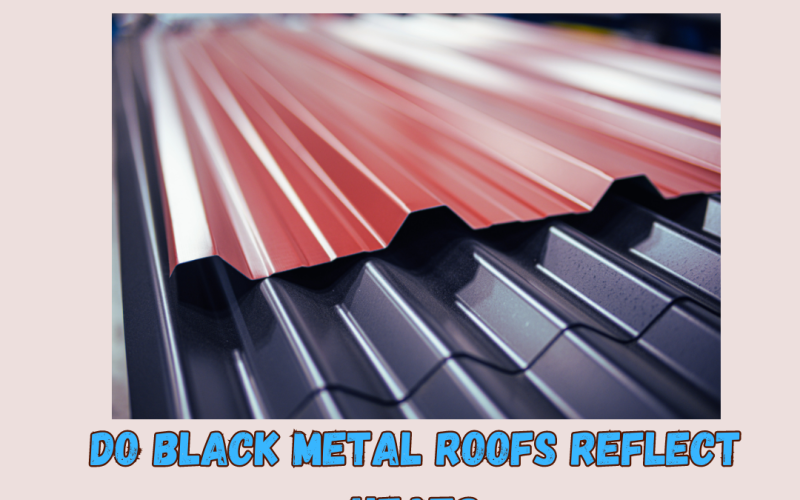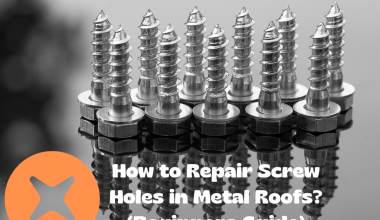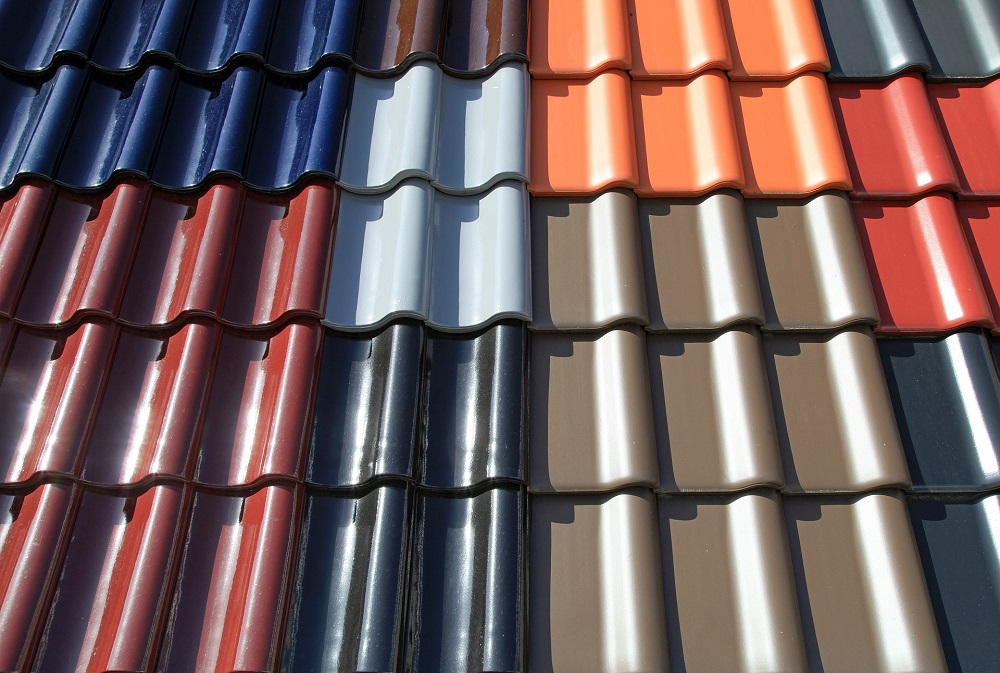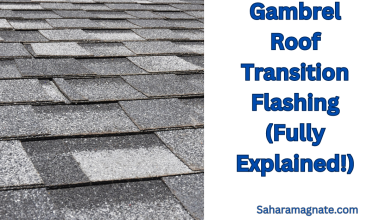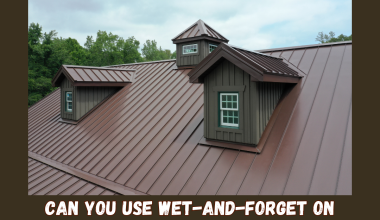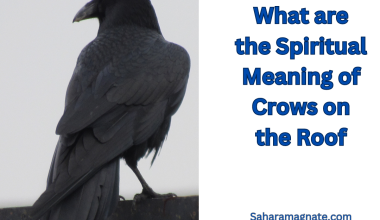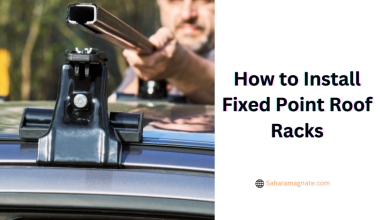If your house is starting to feel like an oven during the summer, you may consider getting a new roof.
But before you do, you probably wonder if a black metal roof will reflect heat. The simple answer is yes, but there’s more to this question than that.
To help you make an informed decision about your roofing options, let me take a few minutes to explain how and why a black metal roof reflects heat.
I’ll also discuss different types of roofs and the materials used for efficient heat reflection.
When we’re done, you’ll better understand how black metal roofs contribute to energy efficiency and whether they suit your home.
Ready? Let’s get started!
Do Black Metal Roofs Reflect Heat?
The popularity of black metal roofs has grown in recent years, but one of the most common questions people have about them is: do black metal roofs reflect heat? The answer is yes—black metal roofs are designed to reflect the sun’s rays and help regulate your home’s temperature.
Metal roofs come in various colors, and black is one of the most popular. Black roofs have darker hues than light-colored materials, so they absorb more heat from the sun instead of reflecting it.
However, they also contain unique reflective pigments that help deflect infrared radiation to reduce overall temperatures.
The best part is that you don’t have to sacrifice style for function. Black metal roofs provide elegant esthetics for your home, with a sleek and modern look.
This can be achieved without worrying about your roof letting too much heat into your home during hot summer days.
That’s why black metal roofing can be an ideal choice for those looking for durability and beauty in a roofing system that won’t overheat their homes.
How a Metal Roof Works to Reflect Heat
A metal roof can help protect your home from the sun’s harsh rays and heat. When it comes to reflecting heat away from your home, metal roofs can effectively reduce your interior temperatures—but how exactly?
It comes down to two things: the color of the metal roof and the material itself. To start, the color of the metal roof plays a big part in how much heat is absorbed or reflected.
A lighter-colored metal roof is ideal for reflecting heat, while darker colors will absorb more heat.
Black metal roofs are made of special paint designed to reflect heat. It’s an actual process called “cool roof technology.”
This means that while the roof’s surface will get hot from absorbing sunlight, it won’t transfer that heat into your home — making it cooler and better insulated during warm weather.
It’s a great way to stay cool without sacrificing durability or strength — because, compared to asphalt shingles, metal roofs can withstand extreme weather conditions (like hail and high winds) for decades.
So not only are you reducing your energy bills, but you’re also getting a strong, long-lasting roof too!
In particular, black metal roofs work in another way to reduce your home temperature: by reflecting some of the sun’s direct rays away from your home.
Additionally, a metal roof (not just black ones) can reflect much of the sun’s indirect radiation before it ever reaches your home.
When reflecting away heat from your home, black and lighter-colored metal roofs can make a difference—it just depends on what you need and what works for you!
Benefits of a Black Metal Roof
Regarding metal roofs, black is often the go-to color choice. But does a black metal roof reflect heat or absorb heat? The good news is that it does both.
Black metal roofs are incredibly popular because they offer the benefits of both reflecting and absorbing the sun’s rays.
Here’s how:
- On the one hand, a black metal roof absorbs more sun rays and effectively reflects more heat than a lighter-colored roof. This helps to keep your home cooler in warm weather.
- On the other hand, a black metal roof can also act as an insulating layer and trap warm air in during cold months, helping to keep your home warmer.
And while you might worry that this means heavier energy bills, a black metal roof is very energy efficient, helping you save money on energy costs by reflecting away 90% of solar radiation in hot weather and trapping in warmth during colder weather — no matter what temperature it is outside!
Disadvantages of a Black Metal Roof
Black metal roofs can look great on your home, but some disadvantages exist. Most people don’t realize that a black metal roof can absorb more heat than lighter colors. Darker-colored roofs absorb more visible light and infrared radiation than lighter-colored roofs.
The absorbed heat then warms the building, making it hotter and more challenging to cool down in summer.
This means that having a black metal roof can cost you more money in energy bills during the peak summer months than a lighter-colored roof.
According to the Department of Energy, homes with darker roofs can have up to 10% higher monthly energy bills than homes with lighter-colored roofs.
It’s also important to note that black roofs may not provide as much insulation for your home as light-colored roofs since they do not reflect as much heat into their environment.
This means that unless properly insulated, your home may be colder in the winter months due to the roof absorbing the sun’s heat during those times.
Compare Reflectivity of Different Materials
Have you ever wondered if a black metal roof will reflect heat? That’s a good question—metal roofs can be made in different colors, and they all have different levels of reflectivity.
Let’s compare the reflectivity of different materials, starting with dark colors. Dark colors like black absorb more sunlight than lighter colors, making them less reflective.
So a black metal roof may not be the best choice if you’re looking for something that reflects heat away from the building.
Now let’s take a look at the lighter side of things. Lighter colors like white are highly reflective because they can reflect up to 70-80 percent of sunlight.
This means that lighter colors can keep your building cooler and drive down energy costs significantly, making them ideal for reducing your home’s carbon footprint.
Finally, metal roofs have been specially designed to be more reflective—these are called cool roofs, and they can reflect up to 90 percent of all sunlight that hits them.
So if you’re looking for an eco-friendly way to keep your home cool while saving money on energy bills, a cool roof might be your best option.
Conclusion
Black metal roofs may not be the first choice for keeping a house cool, but they have their benefits.
Not only are they durable and cost-effective, but they can also reflect some of the sun’s heat if installed correctly.
When considering black metal roofs, consider the local climate, material thickness, and installation techniques to ensure they will adequately reflect heat and avoid increasing the overall temperature of your home.
If the right steps are taken, a black metal roof can be an excellent choice for keeping your home cool and comfortable.
